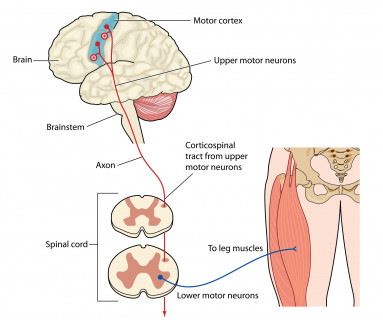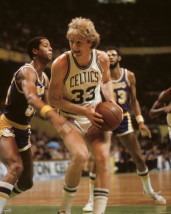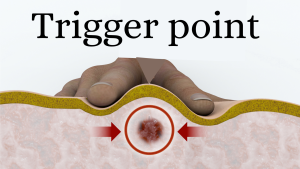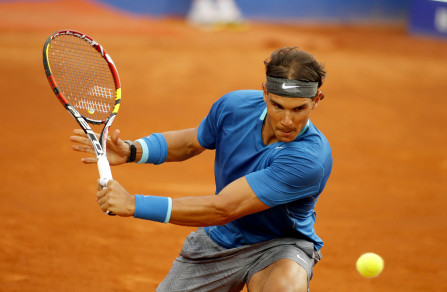Does massage help athletic or sports performance: with practical advice
Professional sports clubs have long used massage as a way to help their athletes, and more recently various self massage options have... Read Article

There are a lot of articles advising exercises, drills and other things to improve your reaction times. Your reaction time is a physiological function that cannot be sped up so these are largely a waste of time. However, there are two proven things that you can do that will speed your reactions when actually playing sports, and these are typically overlooked. These two things are:
Overview
Recognition and decision time
Things that inhibit nerves and muscles
References

Your reaction time is the time is the time taken between when your brain recognises the need to act and when your muscles start to contract. This is approximately 200 ms (a "ms" is 1/1000 of a second so this is 1/5 of a second). It is governed by the speed of nerve transmission and certain chemical reactions so it is similar for everyone whether you are a novice or an elite athlete, and cannot be improved with any training (1,2).
While everyone’s reaction time is roughly similar ones brain first needs to recognise the need to react and decide on an action. This is where elite athletes are much better than novices, and an excellent area to focus our attention on.
While normally functioning nerve transmission and chemical reactions cannot be sped up there are things that can inhibit these functions. The most relevant for those playing sports are (Myofascial) Trigger Points in the muscles. These delay contraction of the muscle for up to 100 ms. There are excellent gains to be had by effectively treating these, removing the inhibition.
As mentioned, most people’s nervous systems and muscles respond at the same speed, +/- a very small amount. The big difference between novice and elite sports people is that the elite interpret and decide to react faster. In this section we will look at the background research, then some practical advice.
In this section:
Most research on reaction times is done with people reacting to stimuli such as lights or sound. For example those tested may have to press a button as soon as they see a light. There is no delay in interpreting the need to react or deciding what to do.

In one trial karate practitioners were required to react to a threat on a video (3). Advanced practitioners were able to perceive the need to react 100 ms faster. This is because their experience allowed them to better interpret visual cues.
In the karate example above those tested needed to interpret the threat on the video, but they were given a simple response. In sport participants need to both interpret the need to react and decide what action to take. This again is where elite sports people are much better.

Larry Bird is recognised as one of the all time great NBA basketballers. Many of those he played against were far more gifted athletes, but it is recognised that Larry was able to better interpret the play and make quicker decisions.
In the scientific trials people were asked to do things such as see how fast they could react when seeing a light or hearing a sound. We can assume that they would be wide awake and focused for the short amount of time it would take. In sports though it may be difficult to maintain such levels of concentration and focus for long periods of time, so anything that could help in this regard (such as getting adequate sleep) will obviously benefit. We are not advocating that people take things to help, but one study of electronic gamers found that caffeine improved the time they took to react by 20 ms (4).
The research clearly shows that generic drills and exercises cannot improve your reaction times. However, there are big benefits to be had by drills that help recognition and decision making. Our practical advice is to make any drills and exercises as closely related to actual actual playing situations as possible. The stimulus should relate to situations requiring a decision in actual play, while the response should match the neuro-muscular response actually required.
Anything that improves the levels of focus should help. These may include:
For a typical 200 ms response times ones nerves and muscles must be functioning normally. Anything that slows the transmission of nerve signals of the response of muscles will slow this time.

(Myofascial) trigger points, or trigger points for short are those tender lumps in your muscles that therapists find. In a trial comparing muscles with and without trigger points the researchers found that those with trigger points responded up to 100 ms slower (5). What happened was the trigger points caused a delay of up to 100 ms in the time taken from when the muscles received the signal to when they contracted. It would be like flicking a switch, but nothing happens for 100 ms.
The karate trial found that the difference between an experienced practitioner and a novice was that with the novices there was a delay of 100 ms in perceiving the need to react. This can be the difference between being able to block a kick or punch, and being knocked out.

A typical ground shot in tennis travels at about 100 kph, which is 28 meters per second. Therefore, during a 100 ms delay due to trigger points the tennis ball would travel 2.8m. In other words, due to the trigger point the tennis ball will have traveled an extra 2.8m before your racket got there.
In the simple example above the tennis player with the trigger points would just miss the ball or miss-time the shot. In reality these movement require the coordinated effort of many muscles, and some may have trigger points while others may not. As well as delaying the response this would also affect coordination (6.7).
As a simple example, say we have a movement that need two muscles to contract together, but one had a trigger point but the other did not. Your brain would send out messages to both at the same time, but the one with the trigger point would contract 100 ms later.
The reality with many muscles it is more complicated, but this illustrates the principle of how timing and biomechanics can be affected. As an example the poor coordination of the muscles controlling the shoulder joint is a major cause of shoulder pain. For more information on thins please see Why shoulder pain keeps coming back and what you can do about it ).
Trigger points are extremely common in the muscles of sports people, and removing them is a scientifically proven way of restoring reaction times and coordination. As an example, in a trail trigger points were found to cause un-coordinated control of shoulder joint movement, but treating those trigger points restored normal coordination (6). To help you with this, in this section we have:
Trigger points are extremely common. As an example, one trial found that nearly 90% of adults with no pain had trigger points in their shoulder muscles alone (8).
While they are best known for causing pain, as this article discusses even when not causing pain they can have serious effects. For information about other effects please see our article Your Complete Guide To (Myofascial) Trigger Points .
Trigger points do not show up in scans or x-rays so they are too often not diagnosed.
The main problem is that course of treatment such as needles, laser and physical therapies are typically designed (and scientifically proven) to relieve pain rather than to eliminate the trigger points. The consequence of that is although you feel better the trigger points are still there. This means:
As we have seen trigger points are extremely common so most sports people have them, and they cause a detrimental effect even if they are not hurting. The main issue with treatment is that they are designed (and scientifically proven) to just relieve pain. In order to properly eliminate trigger points you need to keep at them for long after they stop hurting. If you’re a professional sports person with therapy provided that should be OK, but for anyone else you’ll probably need a self treatment option. The problem here is that the heavily marketed options such as rollers and massage guns and foam rollers are not very effective and probably more likely to hurt you. For how to properly eliminate your trigger points we recommend the following guides.
The simple effective way to treat trigger points yourself
_What is the best treatment for trigger points
We are continually adding more information on research and uses. Subscribe below to have us email them to you "hot off the press".

Several years ago Dr Graeme, a Chiropractor practicing in Victoria, Australia was looking for a serious hand held massager his patients could use at home to get the extra quality massage they needed. The ones he found in the shops and on-line for home use looked nice but were not serious, and... read more
Professional sports clubs have long used massage as a way to help their athletes, and more recently various self massage options have... Read Article
It is claimed that sports massages helps with recovery after sports or exercise, but do they, and are they worth getting? When we looked... Read Article
As practitioners we are continually dealing with dysfunctional musculoskeletal systems. Typically dysfunction develops and is perpetuated... Read Article
Treating or releasing trigger points yourself is actually extremely easy. With a bit of instruction and practice you can easily find the... Read Article
Tennis elbow is a painful condition where prolonged abnormal tension in your forearm muscles causes the site where they are attached to... Read Article
There are a lot of articles advising exercises, drills and other things to improve ones reaction times. However, your reaction time is a... Read Article
Massage or “pressure point” therapy has given excellent relief of headaches in clinical trials. In this article we will show you how to... Read Article
Massage has been widely used by sports clubs and professional athletes, but more recently self massage options have made these more... Read Article
Hand held massagers have allowed us to have massages without the expense and appointments needed when using a professional therapist. ... Read Article
Do not refresh or leave this page until loading complete.